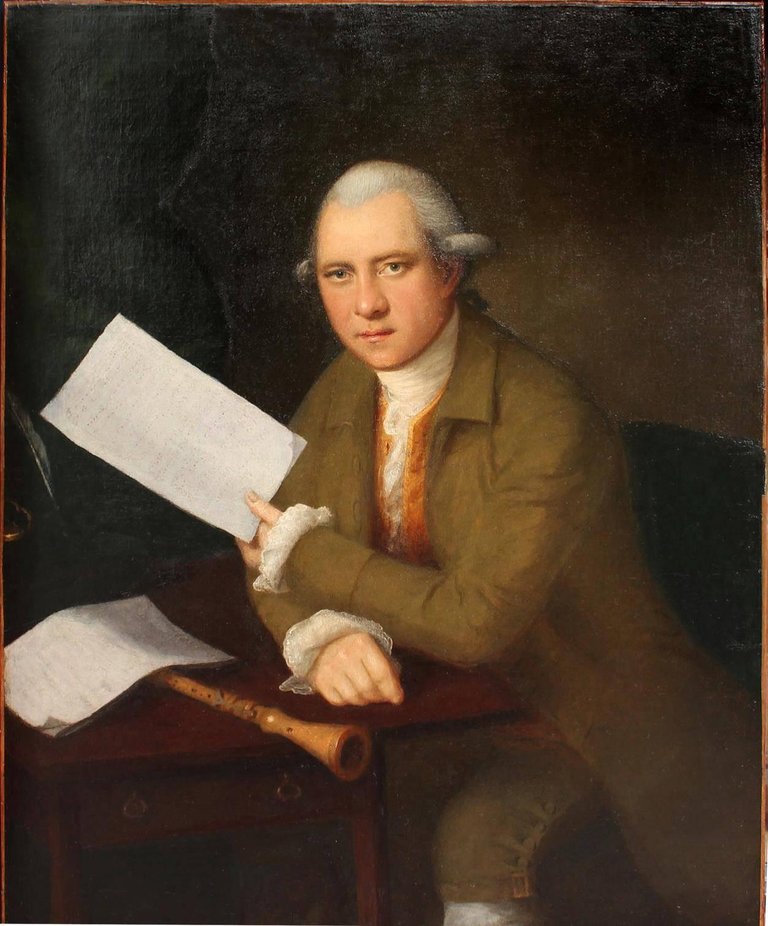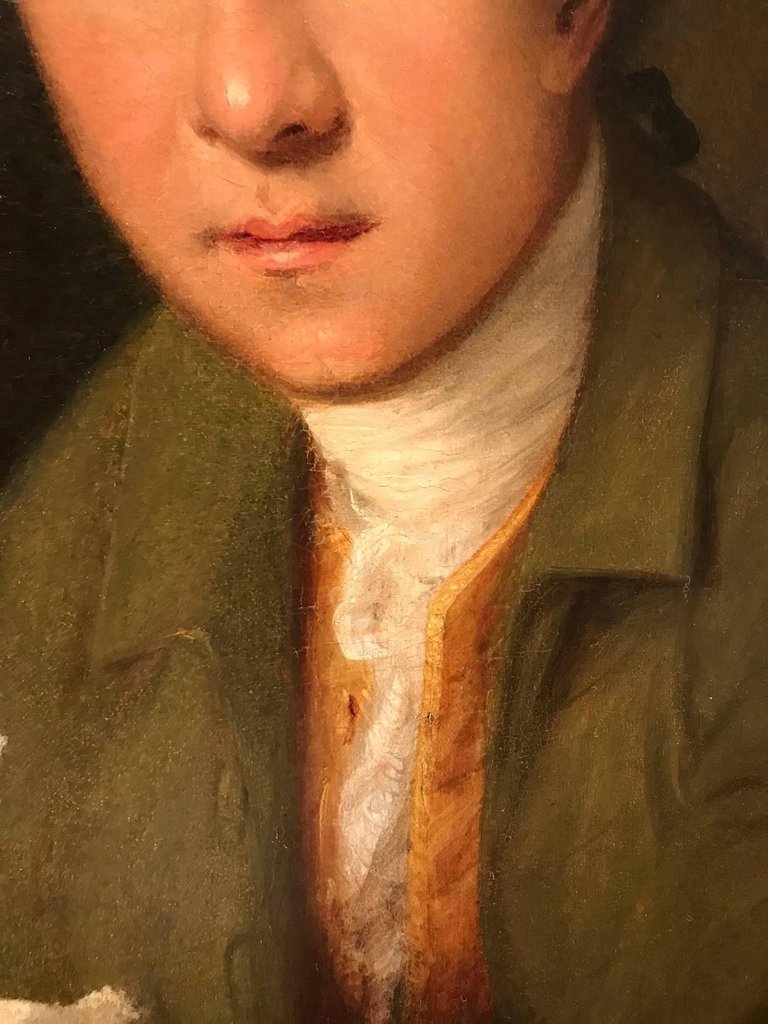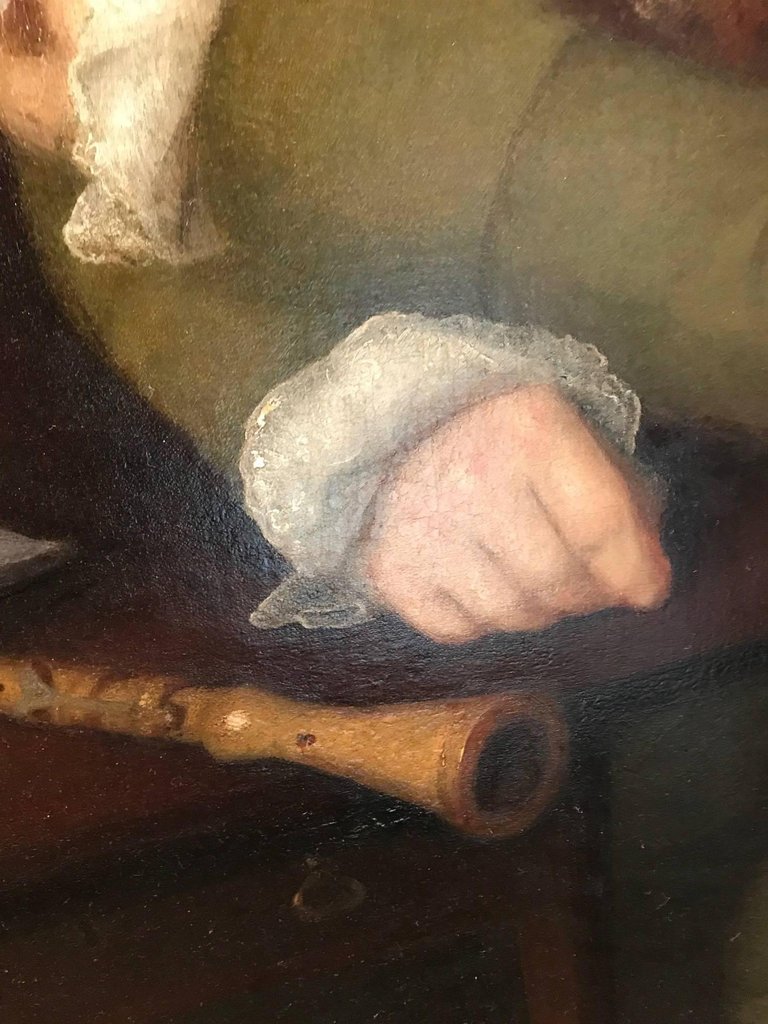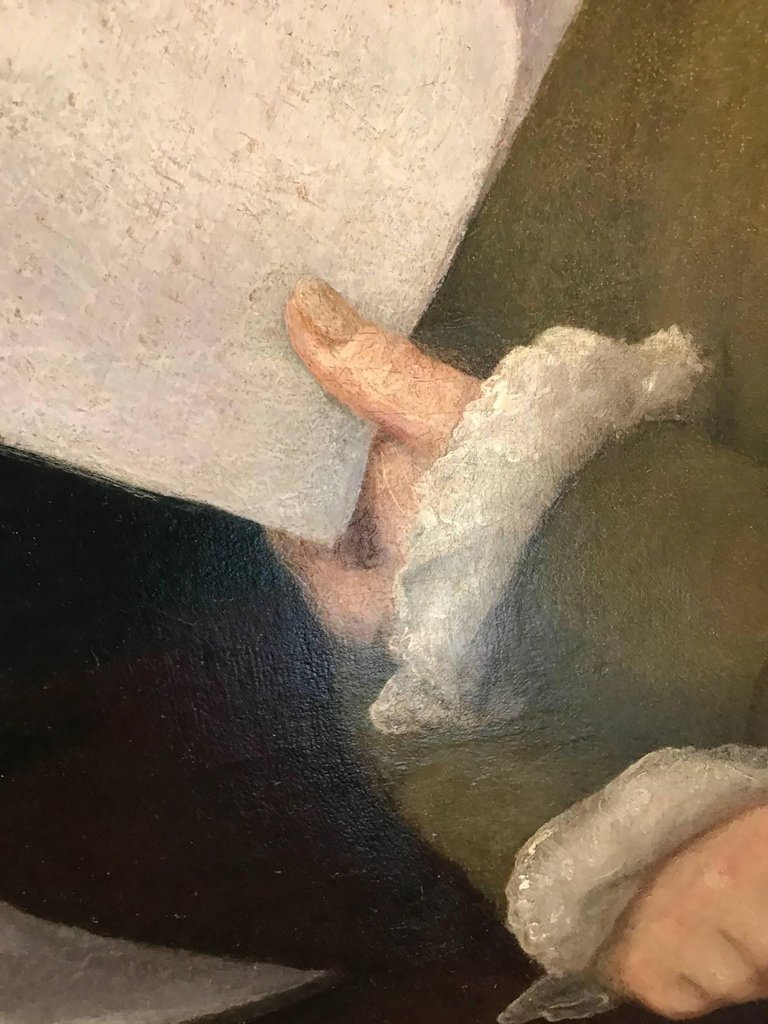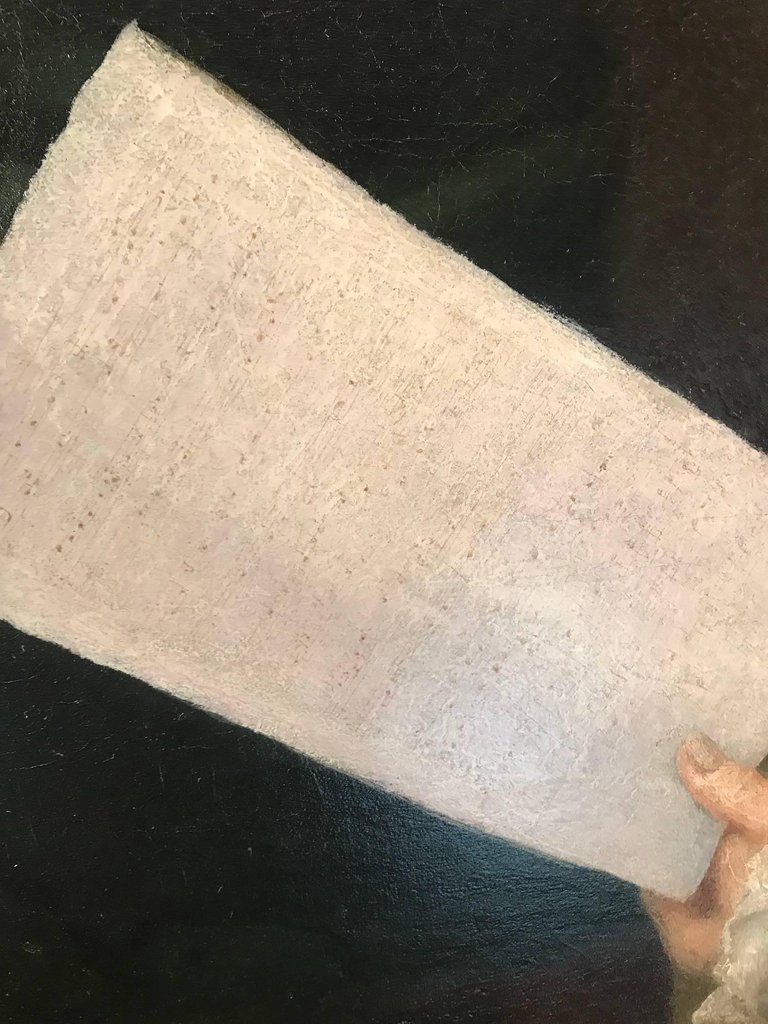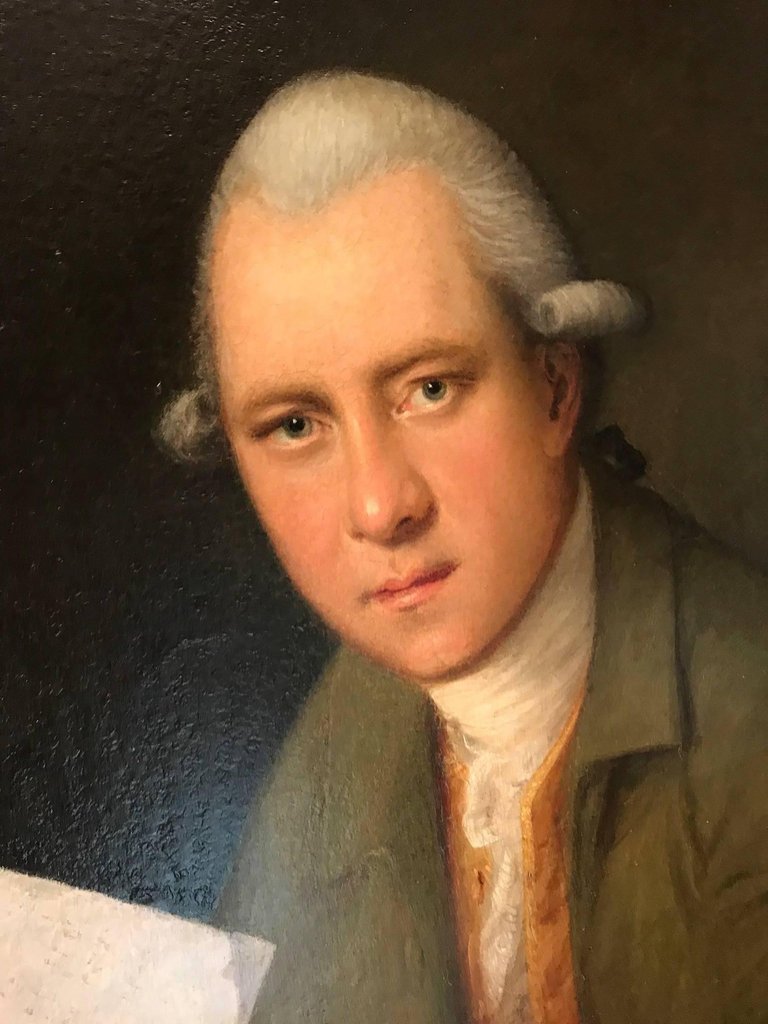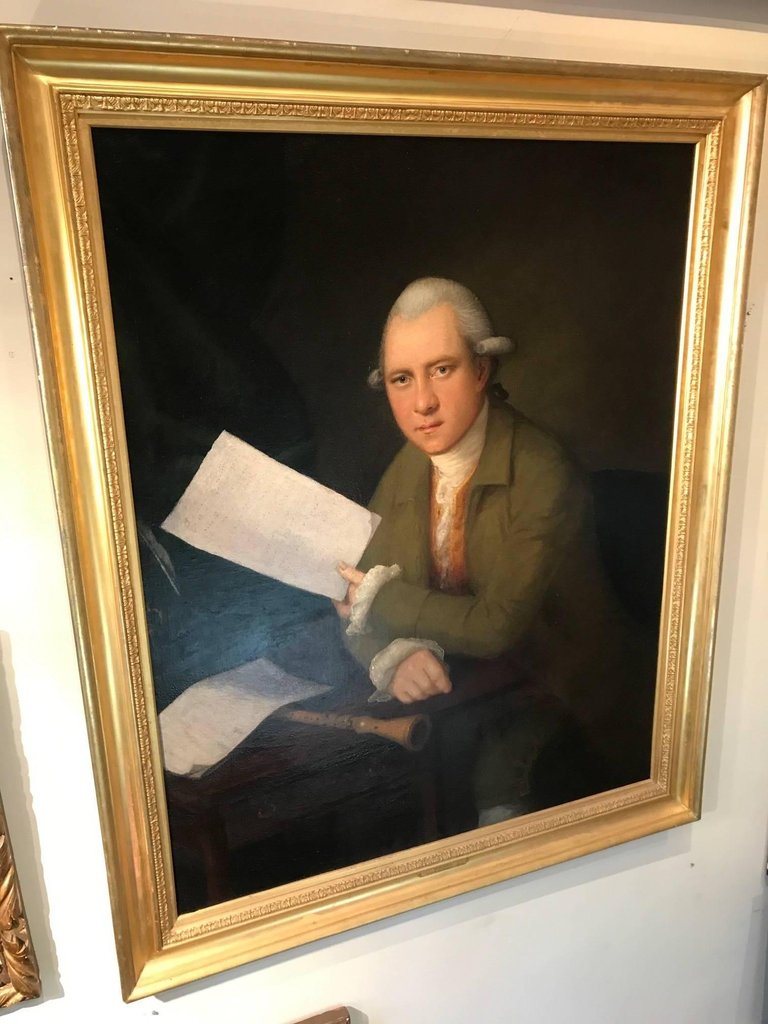Thomas HICKEY (1741-1824)
Oboist John Clark (1745–1829)
oil on Canvas
57 x 46 inches,
122 x 98 cm
Price: Sold
Thomas Hickey is considered one of the most important Irish artists of the 18th century.
This portrait of John Parke shows him with an oboe, and holding the sheet music for Handel’s Largo, Ombra Mai Fu, from his opera Serse.
Parke was a senior member of an extraordinary family of oboe players, which included his younger brother William Thomas Parke, and his daughter Maria Frances Parke, soprano, composer-pianist and oboist. Parke was born in London and studied the oboe and music theory under the composer Baumgarten. In 1768 he was appointed principal oboe at the King's Theatre, and in the same year, he played at the first Birmingham festival and also at the Three Choirs Festival at Hereford. He continued to perform at the Three Choirs festivals for thirty-five years. In 1768 the Dresden oboist J. C. Fischer first went to London and he replaced Parke at the opera in 1769. His performances and ‘soft sweet tone’ inspired Parke. He improved his style and two years later succeeded Fischer as concerto player at Vauxhall Gardens. In around 1771 he accepted an offer from Garrick, always a good friend, to become First oboe at Drury Lane Theatre, a post he retained for most of his career. This did not prevent him being engaged as a principal at the Lenten oratorios, and summer performances at Ranelagh and Vauxhall gardens.
In 1783 the Duke of Cumberland took Parke into his band, which was led by Baumgarten, and the Prince of Wales employed him as a chamber musician at Carlton House with a salary of £100. He was also a member of the King's band and a prominent performer as principal oboe at the Concert of Ancient Music, the Professional, and other concerts, including, with his brother, the Haydn concerts in Hanover Square. Parke also composed some unpublished oboe concertos, which he often played in oratorio intervals and at the pleasure gardens. He retired in 1815 at the age of seventy and subsequently fell into debt, for which he was imprisoned at the Marshalsea in 1823. He appears in the theatrical painting by George Henry Harlow, The Trial of Queen Katherine (c.1817, Royal Shakespeare Theatre Picture Gallery, Stratford upon Avon). Parke died in London on 2 August 1829 and was buried on 10 August at St Martin-in-the-Fields, Westminster.
Thomas Hickey was born and trained in Dublin and spent time in Rome and London before establishing his reputation as a portrait painter in Bath at its fashionable height in 1776–9. He was one of a number of portraitists who came to the city at this time hoping to take advantage of the market created by the departure in 1774 of the richly successful Thomas Gainsborough. Hickey’s success grew quickly, and he gained commissions from many of Bath’s civic elite.
Hickey applied to the East India Company in March 1780 to work in India. Hickey sailed for India in July 1780 but his ship was captured by the French and Spanish en route. Released as a non-combatant, he found his way to Lisbon in Portugal where he established a profitable practice as a portraitist. From February 1789 Hickey had some success in Madras, but he was back in Calcutta by 1790. In January 1791 he sailed home. On his return, Hickey spent four years in both London and Dublin, a period of development that saw some of his most mature and incisive work, including the present portrait of John Parke.
In addition to his artistic talents, he is reputed to have been a sparkling conversationalist who rarely failed to charm his sitters. The Courtauld Institute of Art (London), the Honolulu Museum of Art, the National Gallery of Ireland, the Tate and the Victoria Art Gallery (Bath, England) are among the public collections having paintings by Thomas Hickey.
